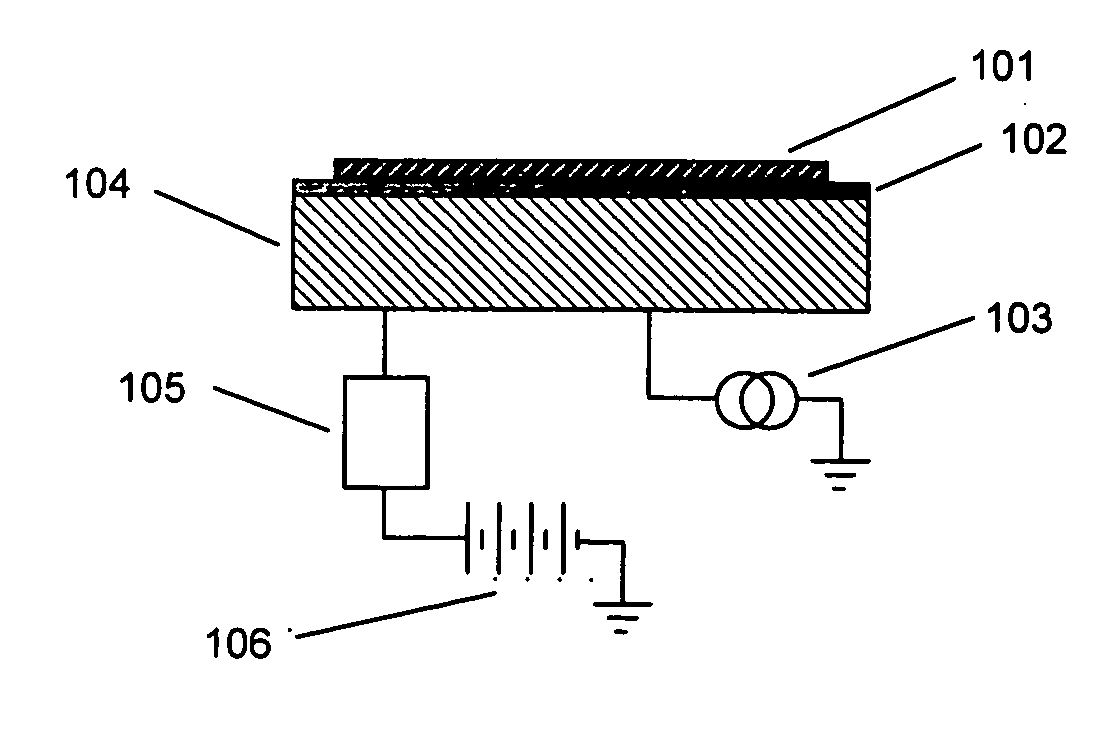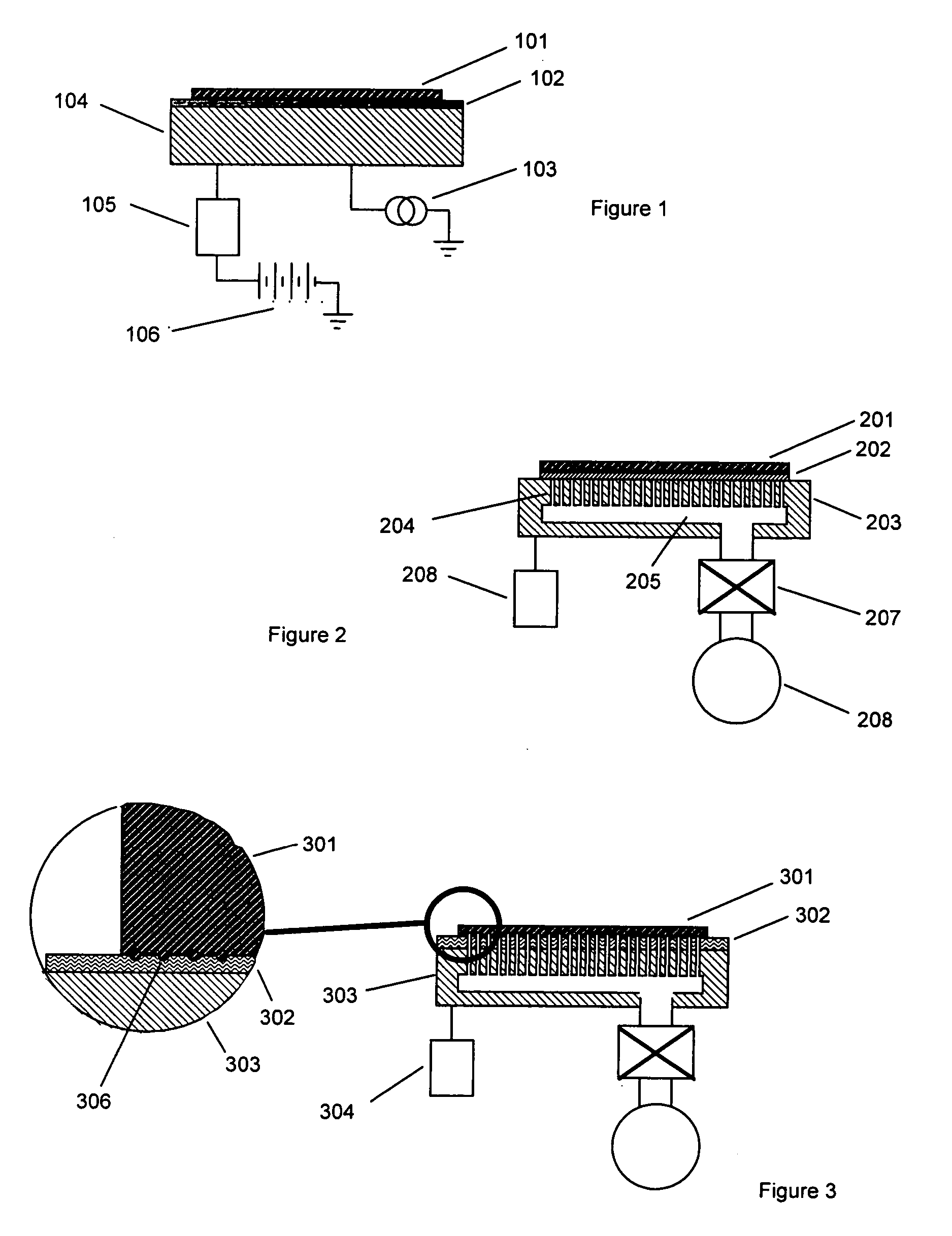Clamp for holding and efficiently removing heat from workpieces
a workpiece and heat transfer technology, applied in emergency protective circuit arrangements, coatings, chemical vapor deposition coatings, etc., can solve problems such as uneven cooling rate of gaseous heat conduction, poor heat transfer from workpiece to temperature controlled pedestal, condensation on parts of the pedestal exposed to atmospher
- Summary
- Abstract
- Description
- Claims
- Application Information
AI Technical Summary
Benefits of technology
Problems solved by technology
Method used
Image
Examples
Embodiment Construction
[0015] It is the object of the disclosed invention to effectively and safely clamp wafers or substrates to allow efficient heat transfer from them to a temperature controlled pedestal during plasma processing. This clamping system and method works with wafers or substrates that either have a soft plastic or elastomeric surface which completely covers one side, or that have a layer of such a soft plastic / elastomer applied to one side. In order to permit electrostatic clamping the soft or elastomeric layer should either be an electrical insulator or have very high electrical resistance. The clamping method employs a combination of vacuum and electrostatic pressure in sequence. Such clamping on the wafer or substrate causes the plastic or elastomeric material to conduct the heat from plasma processing efficiently from wafer or substrate to the temperature controlled pedestal thereby maintaining acceptably low wafer or substrate temperatures.
[0016] The pedestal to which wafers or subst...
PUM
| Property | Measurement | Unit |
|---|---|---|
| gas pressures | aaaaa | aaaaa |
| voltage | aaaaa | aaaaa |
| temperature | aaaaa | aaaaa |
Abstract
Description
Claims
Application Information
 Login to View More
Login to View More - R&D
- Intellectual Property
- Life Sciences
- Materials
- Tech Scout
- Unparalleled Data Quality
- Higher Quality Content
- 60% Fewer Hallucinations
Browse by: Latest US Patents, China's latest patents, Technical Efficacy Thesaurus, Application Domain, Technology Topic, Popular Technical Reports.
© 2025 PatSnap. All rights reserved.Legal|Privacy policy|Modern Slavery Act Transparency Statement|Sitemap|About US| Contact US: help@patsnap.com


